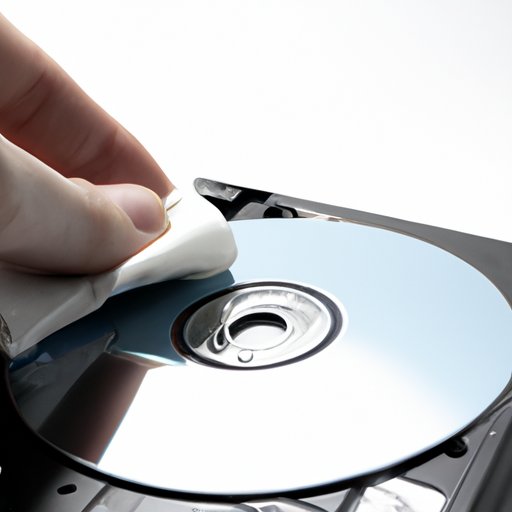
Introduction
If you’re planning on selling or giving away your computer, it’s crucial to completely wipe it to protect your personal information. Simply deleting files isn’t enough, as they can still be recovered using specialized software. In this article, we’ll cover the most effective methods for completely wiping a PC, including third-party software, Windows reset, manual deletion, external hard drives, secure cloud services, live CD/USB, and physical destruction.
Using a Third-Party Software
Third-party software like CCleaner, DBAN, and Eraser can be used to completely wipe a PC. These programs work by overwriting a hard drive with zeros or other data, making it impossible to recover any previous data.
Using a program like CCleaner is simple. First, download and install the program. Then, open it and navigate to the “Tools” tab. From there, select “Drive Wiper” and choose the drive you want to wipe. Finally, select the wiping method and start the process.
Use Windows’ Built-In Reset Option
If you’re using Windows, the operating system comes with a built-in reset feature. This option removes all personal files, settings, and applications, effectively wiping your PC clean. It’s important to note that this feature doesn’t wipe the entire hard drive, so data could potentially be recovered using specialized software.
To use the built-in reset option, navigate to the “Update & Security” section in the Settings app. From there, select “Recovery” and then “Reset this PC.” Follow the prompts to wipe your PC.
Manually Delete Everything
While it’s a time-consuming process, manually deleting everything from your PC can be an effective way to ensure all personal data is wiped. To do this, go through your files, folders, and applications and delete everything. Then, empty the trash and use recovery software to overwrite the entire hard drive with new data, making it impossible to recover any previous information.
Use an External Hard Drive
An external hard drive can be used to transfer important files before wiping your PC. Simply transfer any files you want to keep onto the external hard drive, and then format your PC. This method ensures all personal information is wiped, and you still have access to any important files.
To use an external hard drive for this purpose, connect the drive to your computer and transfer any important files. Once the files have been transferred, format your PC by navigating to the “This PC” section in File Explorer and right-clicking on your hard drive. Select “Format” from the drop-down menu and follow the prompts to wipe your PC.
Use a Secure Cloud Service
A secure cloud service like Dropbox or Google Drive can be used to store important files before wiping your PC. This method ensures access to the files from anywhere, and they’re stored securely in the cloud. It’s important to note that this method requires a strong internet connection.
To use a secure cloud service, simply upload any important files to your account and then format your PC. Once the PC has been wiped, redownload the files from the cloud service.
Use a Live CD/USB
A live CD or USB is an operating system that runs from a CD or USB drive rather than your computer’s hard drive. This method allows you to securely wipe your PC without installing any software on your hard drive.
To use a live CD or USB, first, download the operating system of your choice and create a bootable CD or USB drive. Then, insert the CD or USB drive into your PC and restart it. Follow the prompts to boot from the CD or USB drive and wipe your PC.
Physically Destroy the Hard Drive
While extreme, physically destroying the hard drive is the most certain way to wipe a computer completely. This method should only be used if you’re absolutely sure you won’t need any data from the hard drive in the future.
To physically destroy a hard drive, first, remove it from your PC. Then, use a hammer, drill, or other tool to completely destroy it. Be sure to wear protective eyewear and gloves while doing this.
Conclusion
There are several methods for completely wiping a PC, each with its pros and cons. Third-party software like CCleaner can offer a simple and effective solution, while using an external hard drive or secure cloud service can help you save any important files before wiping your PC. If you’re more tech-savvy, using a live CD or USB can be an ideal option. However, if you’re looking to ensure your data is completely destroyed, physically destroying the hard drive is the most effective method.
Ultimately, the method you choose will depend on your needs and expertise. Regardless of the method you choose, it’s important to completely wipe your PC before selling or giving it away to protect your personal information.




